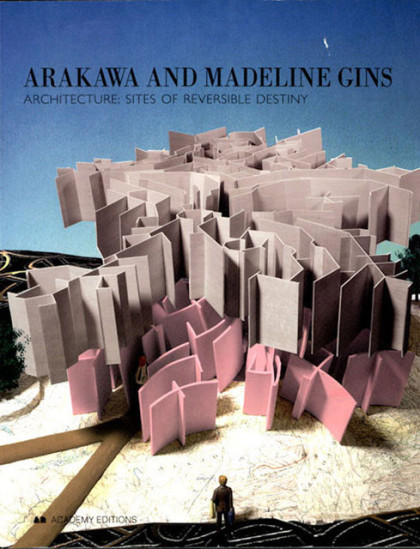
By means of architecture, or by means of what will be slightly but significantly different from what architecture has until now been, perception can be re-routed and new sites for the originating of a person can be found or formed.
– Arakawa and Madeline Gins, Architecture: Sites of Reversible Destiny
Architecture: Sites of Reversible Destiny begins with an essay by Australian philosopher Andrew Benjamin and showcases a selection of projects including Site of Reversible Destiny (Gifu, Japan), Reversible Destiny House I, The Bridge of Reversible Destiny (Epinal, France), and Double Horizon Public Housing (Berlin, Germany).
Art+Design Monograph, Academy Group, 1994
Table of Contents
Andrew Benjamin Landing Sites
Pictorial Preface
Arakawa and Madeline Gins Architecture: Sites of Reversible Destiny
Section One
Ubiquitous Site
Section Two
Constructing the Perceiving of an Ordinary Room/
Generating a Site of Reversible Destiny
Section Three
Constructing the Site/Terrain Studies
Section Four
Projects
Some Notes on Tentative Constructed Plans
Site of Reversible Destiny/Reversible Destiny House II (Gifu, Japan)
Reversible Destiny House I
Trench House
Bridge of Reversible Destiny (Epinal, France)
Antartica/Horizon Project
Double-Horizon Public Housing (Berlin/Tokyo)
- English edition:
Publisher: Academy Editions, London, 1994 - Japanese edition:
Publisher: Suiseisha, 1995
